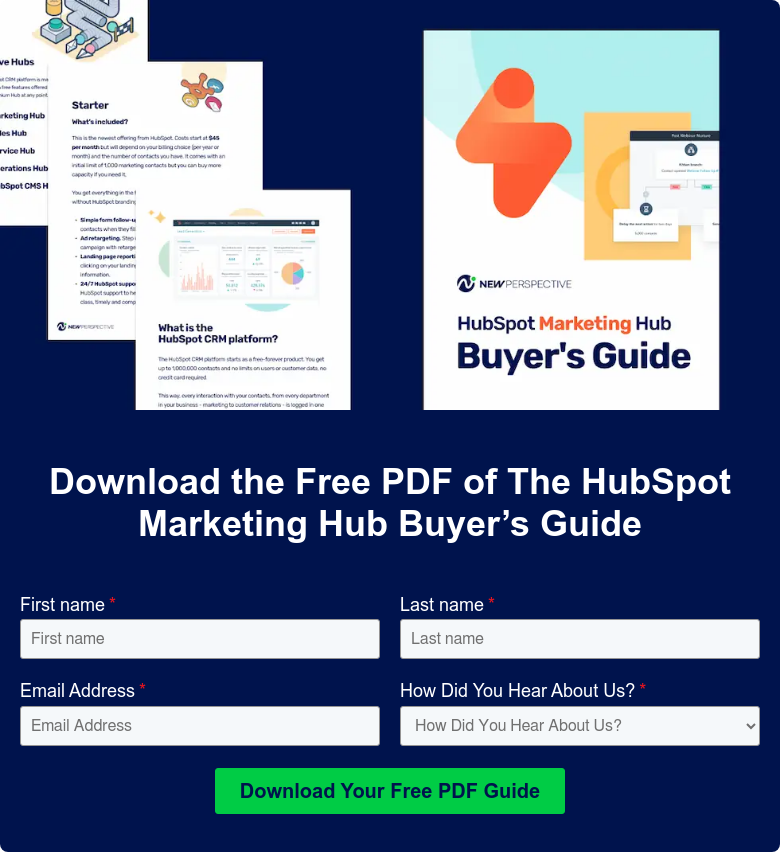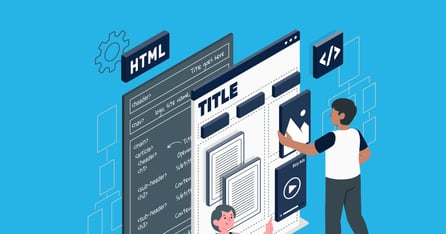30 Marketing Terms You Need to Know: A Visual Glossary

Whether you’re new to the industry or a seasoned marketing professional, it can be hard to keep up with the latest marketing lingo. It is no secret that in this field, there are always new methods and techniques emerging — and along with them come a unique set of terms and acronyms.
To help you keep track, we created a visual glossary — it's intended as an easy reference, a quick refresh, and a helpful tool for navigating this ever-expanding vocabulary. Bookmark the page to keep it handy.
A visual glossary of marketing terms
AB testing
Also known as split testing, A/B testing compares two versions of a website page, element or application to find out which performs better. Web traffic is split 50/50: visitors are driven to either version at random.
Affiliate marketing
An engagement in which someone is paid to promote someone else’s product or services, usually through website and social media-based promotions. The promoter earns a commission on the number of sales and referrals generated.
B2B
B2B — or business-to-business — focuses on marketing goods and services to other businesses. The relationships are different: usually bigger deals, and different expectations. So are the strategies, though the same basic need to attract and engage applies. Think manufacturer and wholesaler, or corporation and services provider.
B2C
B2C — or business-to-consumer — focuses on marketing products and services to individual consumers. For example, a clothing company where the end-user is typically the direct consumer of the product.
Buyer persona
A detailed description (and often a fictional representation) of your ideal customer based on market research and real data about your existing customers. Creating a buyer persona is key to understanding the pain points, expectations and needs of your target audience.
Buyer’s journey
Also known as a purchase journey, the buyer’s journey defines the stages of the process a customer goes through to purchase a product or service (awareness, consideration and decision). It includes key details about the choices, actions and interactions that happen during each phase.
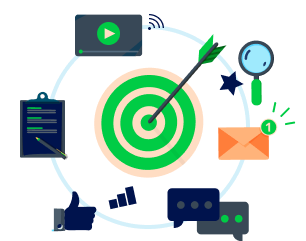
Campaign
A series of advertising tactics across a variety of digital- and sometimes print-based media that focus on the same message. Successful campaigns are those campaigns organized and aligned around specific goals.


Content marketing
A marketing approach that centers on the creation, curation, and publication of a range of digital media for a specific audience. Content includes but is not limited to blogs, social media posts, videos, ebooks, email blasts, infographics, podcasts, and more.

Content optimization
A process in which a piece of content is assessed and improved in order to reach a specific audience, and meet its specified goal through marketing best practices. This can involve activities such as keyword selection, image size updates, search-friendly titles, meta descriptions and more.
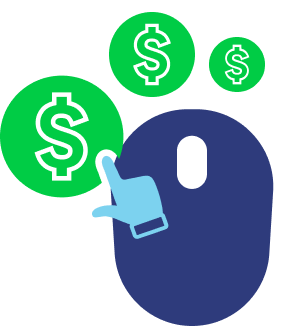
CPC
CPC — or cost per click — is an online advertising revenue metric used with platforms such as Google Ads or Microsoft Ads. Each time a user clicks on a display ad, the advertiser pays for it. In simplified terms, the total ad spend divided by how many clicks you get is your CPC.
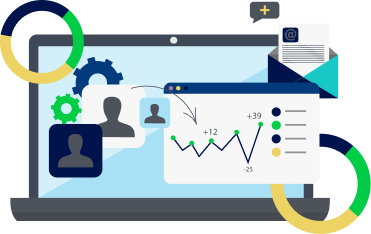
CRM
CRM — or customer relationship management — refers to software that manages all the relationships, communications, and interactions a business has with prospects and customers.
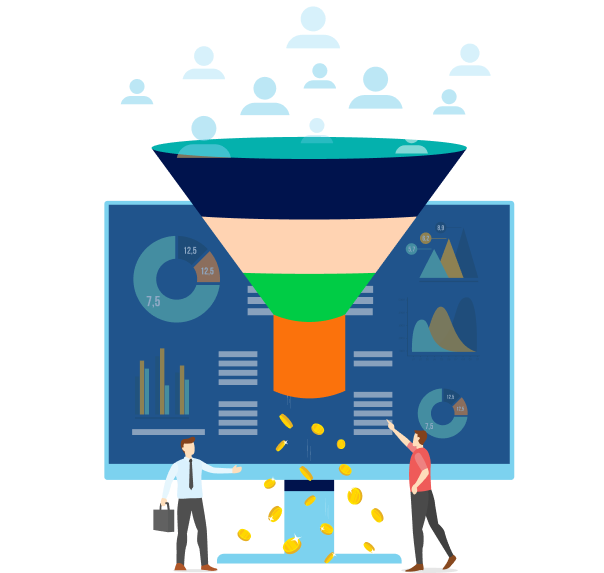
CRO
CRO — or conversion rate optimization — is the process of increasing the percentage of users or website visitors who take a desired action. The rate is calculated by dividing those who act into those who visit (to get a percentage, multiply by 100).
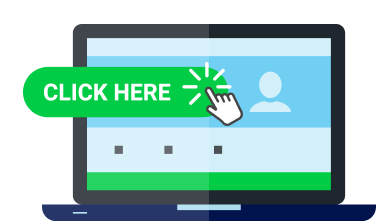
CTA
A CTA — or call to action — refers to a text prompt and paired graphic element designed to incite the target audience to take the next step. One common example: that bold button on a website page that reads ‘Schedule a Consultation’ or ‘Request a Demo.’

CTR
CTR — or click through rate — is a performance metric in paid advertising, related to CPC. It focuses on how many people see and then click on your ad (and follow the link) versus how many people just see it without taking any further action.

DNS
DNS — or domain name system — is like the phone book of the internet, a database directory that translates domain names (i.e. www.amazon.com) into IP (internet protocol) addresses.

Domain name
A domain name is simply the name of a website and more importantly how your audience can find you online. It is what comes after the www. in a website address or after the @ in an email address. Your first step in creating a web presence is to purchase a unique domain name from a domain host — an internet service network responsible for the management of multiple domain names.

Email marketing
Creating great emails and sending them to a specific contact list can be a great strategy for driving awareness and engagement around a marketing campaign or goal, as well as keeping and building your customer base.

Engagement
Engagement is what we all want: when a consumer and brand connect, and a consumer interacts and shows interest in your content. One example of how engagement is measured is by tracking the likes, shares, and comments on a social media post.

Heat map
A heatmap is a way of visualizing data in colors. In digital marketing, heatmaps are often used to show how visitors interact with your web pages — where the most and least clicks occur, for instance.
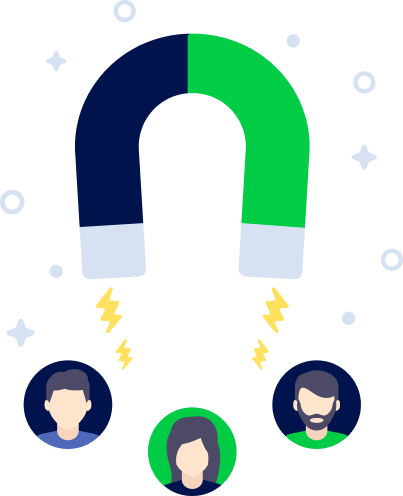
Inbound marketing
Inbound Marketing is a method and a philosophy of marketing. It focuses on the organic attraction of customers through the creation of valuable, relevant content tailored to their specific needs. It answers their questions, helps them solve their existing challenges, and overcomes their pain points.

Keyword
In the simplest terms, a keyword is the word people use to search for something. You want to find those keywords that best represent your business and the content on your website, and will enable your website to rank higher in search results. This isn’t a guessing game: it takes savvy research and analysis into keyword performance.

KPI
KPI — or key performance indicator — is a quantifiable measure over time of how well a specific objective is being achieved. It could be the number of form submissions or an increase in conversation rate, for instance.
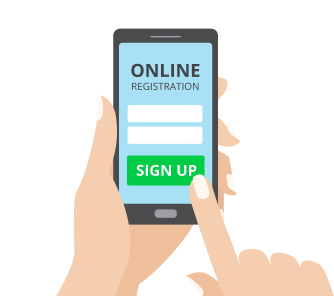
Landing page
When a prospect clicks on an email or an ad, they wind up on a landing page. In marketing speak it’s a very specific, focused page that has a single goal — usually to capture a visitor's contact information in exchange for a valuable engagement or content piece. Done well, landing pages are lead conversion machines. (One hint: keep it simple.)

Leads
Who is a lead? Any individual or company that has interacted with your business — perhaps they filled out a form or downloaded a piece of your content. They have the potential to become a customer — and whether they’re considered a good lead or not depends on the likelihood that you can close a deal with them.

Retargeting
Retargeting is a way to re-engage visitors who have shown interest in a product or service but haven’t committed to it. Direct advertisements are put in front of them to get them to convert.
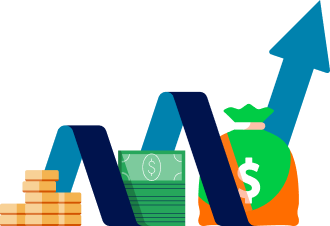
ROI
ROI — or return on investment — is a calculation of the value of an investment (profit) versus its cost. It’s a critical ratio when it comes to marketing, often indicating where to allocate budgets for future campaigns.

SEO
SEO — or search engine optimization — uses keyword research, content optimization, and other strategies to boost the listing position of your page in search results. Getting found is everything, and SEO has become a major part of digital marketing for good reason.

Social proof
Social proof is when people follow and copy others based on their positive influence. It could be an expert’s testimonial recommending a project or a credible source recommending a service, for instance. But it builds a sense of trust in leads that can inspire them to convert.

UVP
UVP — or unique value proposition — is a statement about what benefits you offer your customers. It captures what truly differentiates your product or service from all the others and sets it above the competition.
Discover the marketing strategies that lead to success
Consider us an extension of your marketing team! We would love to talk more about your individual marketing strategy.
